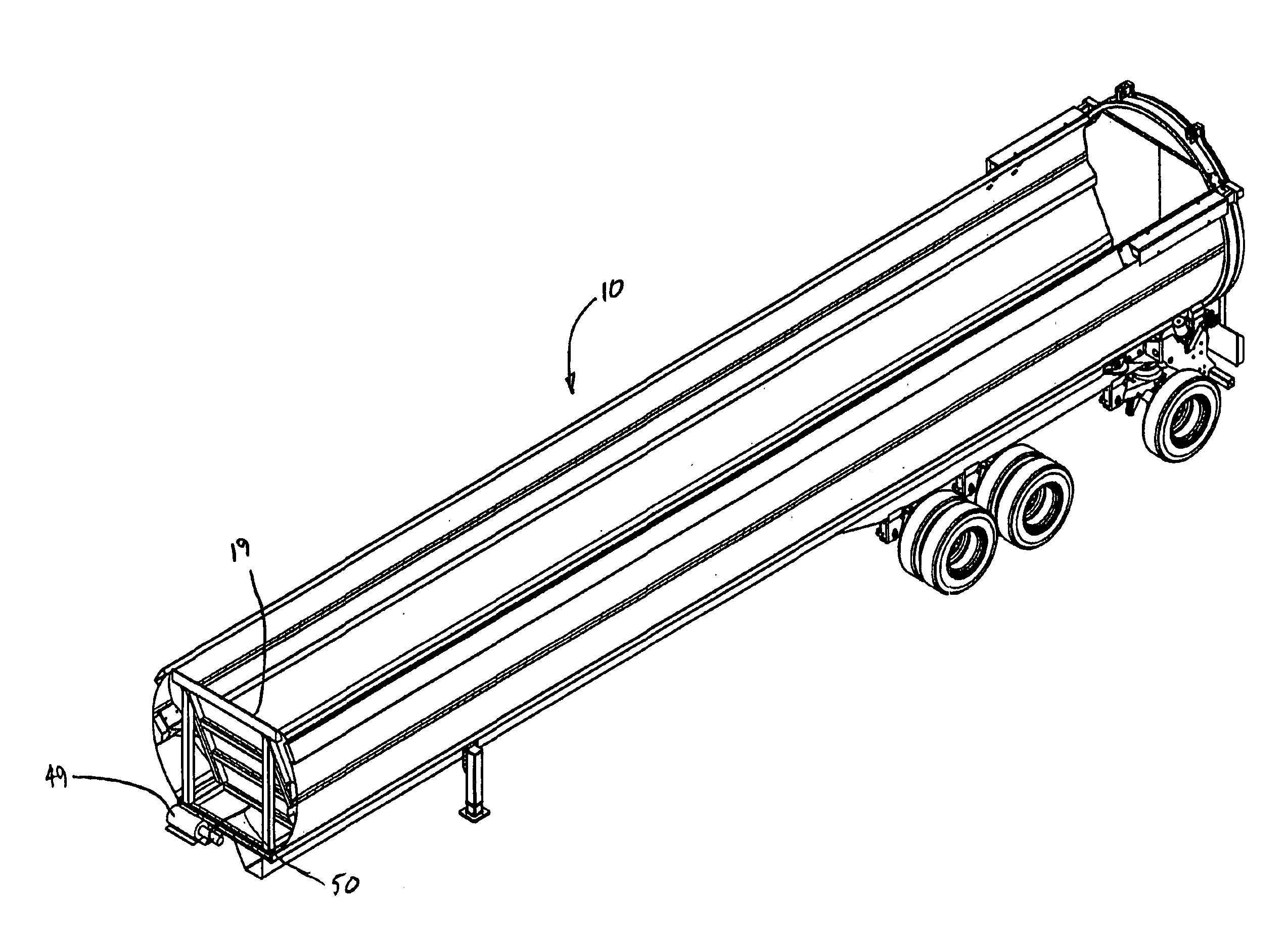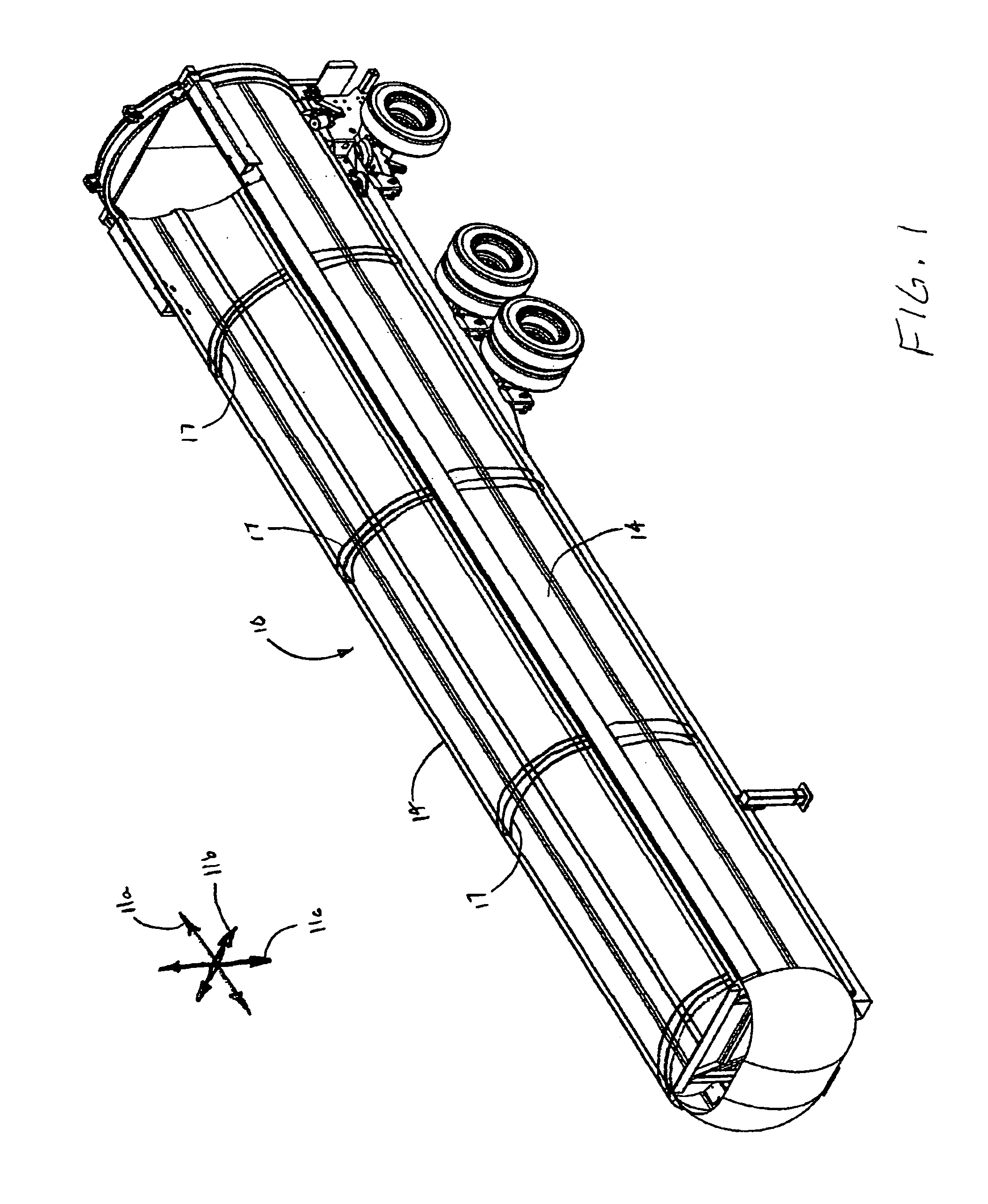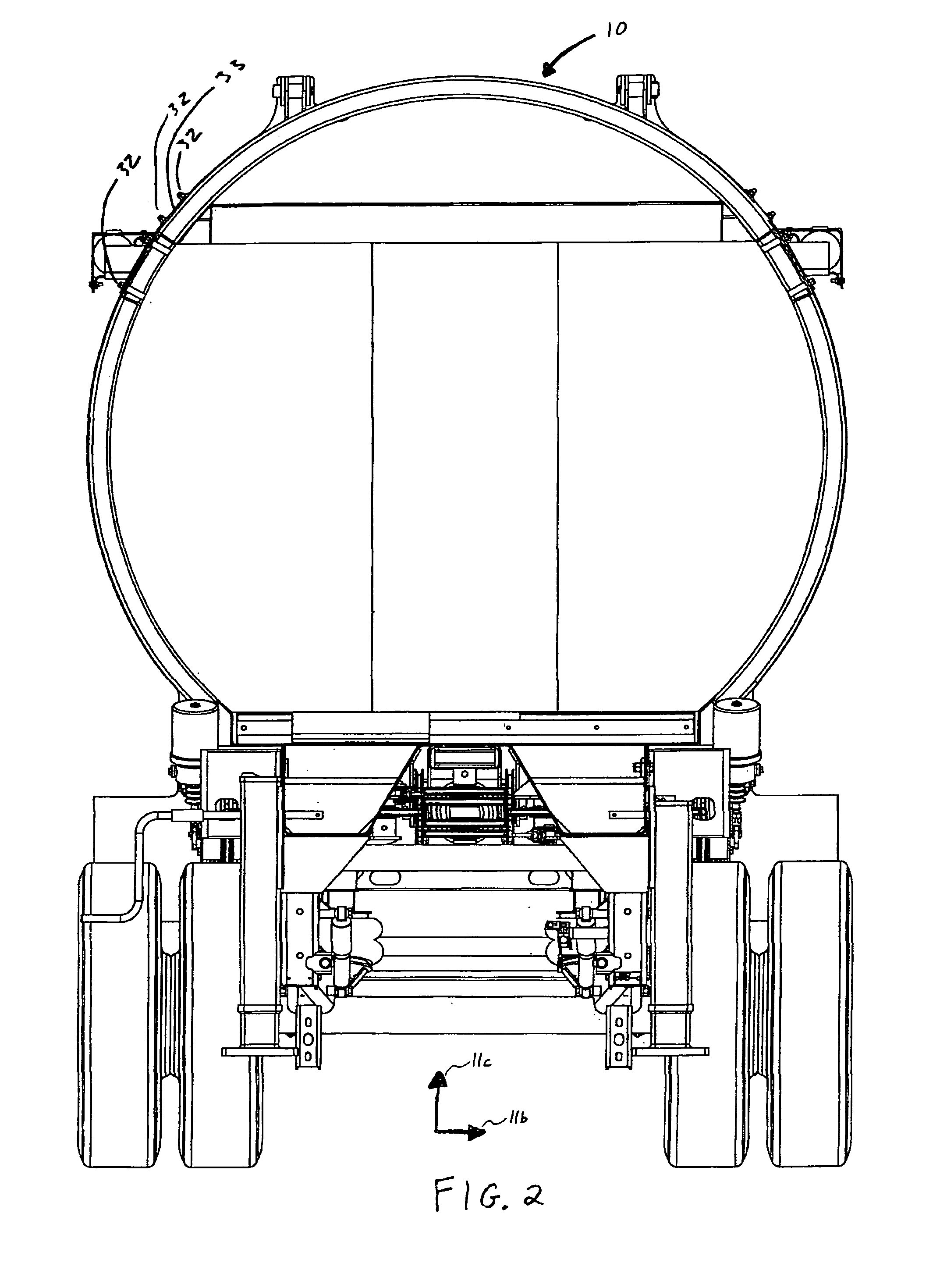Material ejection system for a vehicle
a technology for ejection systems and vehicles, which is applied in the field of bulk trailers, can solve the problems of increasing the profitability of trucking operations, increasing the cost of trailers, so as to reduce the diameter of the cable in the sheave, reduce the required force, and increase the speed of ejection
- Summary
- Abstract
- Description
- Claims
- Application Information
AI Technical Summary
Benefits of technology
Problems solved by technology
Method used
Image
Examples
Embodiment Construction
[0041]It will be readily understood that the components of the present invention, as generally described and illustrated in the Figures herein, could be arranged and designed in a wide variety of different configurations. Thus, the following more detailed description of the embodiments of the system (and method) of the present invention, as represented in FIGS. 1 through 10, is not intended to limit the scope of the invention, as claimed, but is merely representative of certain embodiments of apparatus (and methods) in accordance with the invention.
[0042]The embodiments of systems in accordance with the invention will be best understood by reference to the drawings, wherein like parts are designated by a like numerals throughout. Those of ordinary skill in the art will, of course, appreciate and that various modifications may easily be made without departing from the basic characteristics of the invention.
[0043]Referring to FIGS. 1 and 2, in describing an ejecting trailer 10 in acco...
PUM
 Login to View More
Login to View More Abstract
Description
Claims
Application Information
 Login to View More
Login to View More - R&D
- Intellectual Property
- Life Sciences
- Materials
- Tech Scout
- Unparalleled Data Quality
- Higher Quality Content
- 60% Fewer Hallucinations
Browse by: Latest US Patents, China's latest patents, Technical Efficacy Thesaurus, Application Domain, Technology Topic, Popular Technical Reports.
© 2025 PatSnap. All rights reserved.Legal|Privacy policy|Modern Slavery Act Transparency Statement|Sitemap|About US| Contact US: help@patsnap.com



